After getting a lot of feedback for my Song for Sharon comic (especially in the generous youtube comments section), I decided to illustrate Guinnevere by Crosby, Stills and Nash (written by Crosby).
The calm structure of the song provided a good counterpoint to the tense mood of Song for Sharon, and I used the comic as an opportunity to push my abilities in sequential art. I also decided to use watercolors on the comic, as I felt the subject worked better in color. Each page is 12" by 18" (much smaller than the pages of my last comic).
While David Crosby wrote the song about three women who were important in his life (one of which was Joni), I used the ambiguous lyrics to highlights three elements of my own definition of beauty.
This video pans through the comic in sync with the song.
Below are the individual pages, along with extended explanations of my thought process, as this comic was less of a direct translation of the lyrics as compared to my Song for Sharon comic.
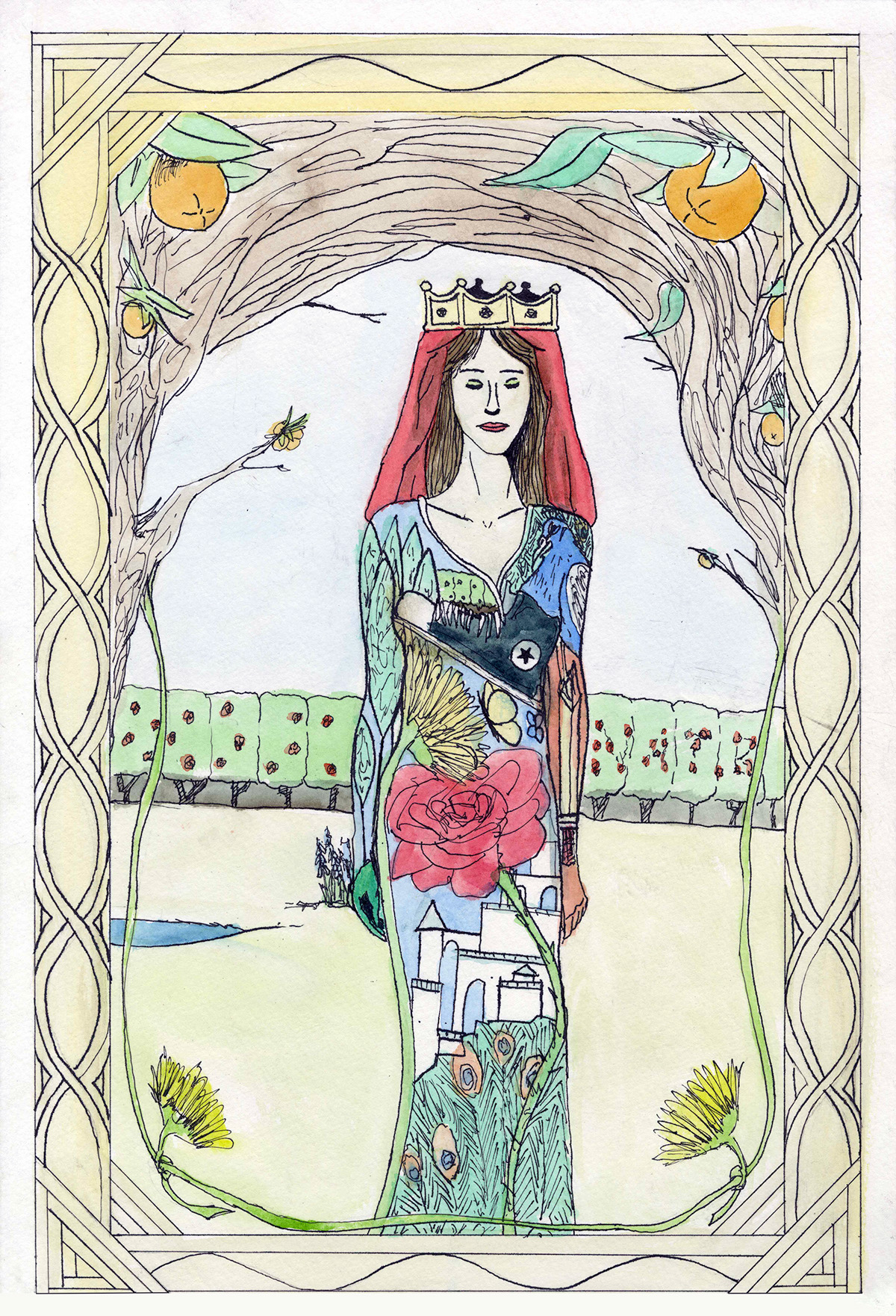
Page 1. This and page 8 were illustrated after the rest of the comic was complete, and provide bookends to the narrative. This first page has elements from roughly the first half of the comic (as seen in the unusual collection of images which compose her dress).
For me, the idea of Guinnevere is an ideal that can be achieved through many different women, so my depiction of Queen Guinevere (the song lyrics have it spelled with a second "n," but the character from Arthurian legend is spelled with one) changes throughout the comic to reflect different women and different definitions of beauty.
As with Song for Sharon, if in book form this page would be by itself on the right side, with page 2 and 3 side by side on the next page (page 4 and 5, and 6 and 7 are also pairs, with page 8 by itself on the left side at the end). So when looking at a page, I also considered how it would look next to its pair.
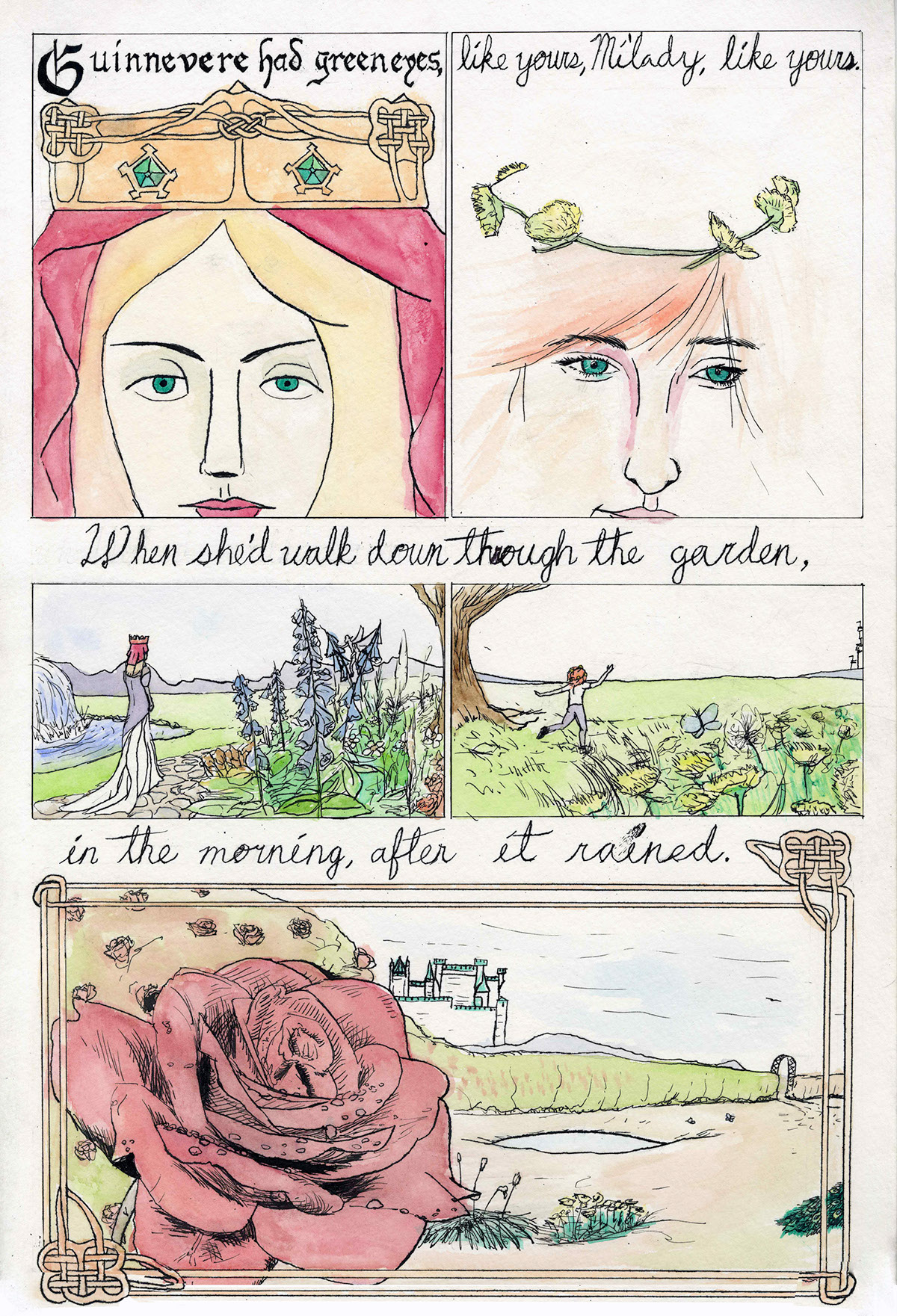
Page 2. I start the comic with an image of Guinevere that is supposed to reflect her medieval origins (simplified facial features with an ornate crown) and juxtapose it with my first declaration of beauty: someone who possesses a love of nature and a sense of wonder for the world.
The line between what's real and what's myth is blurred in this comic, as a hint of the castle can be seen in the middle-right panel. The border of the lower panel reflects the Queen's crown, and near the bottom right is the end of a peacock's tail (which leads to the next page).
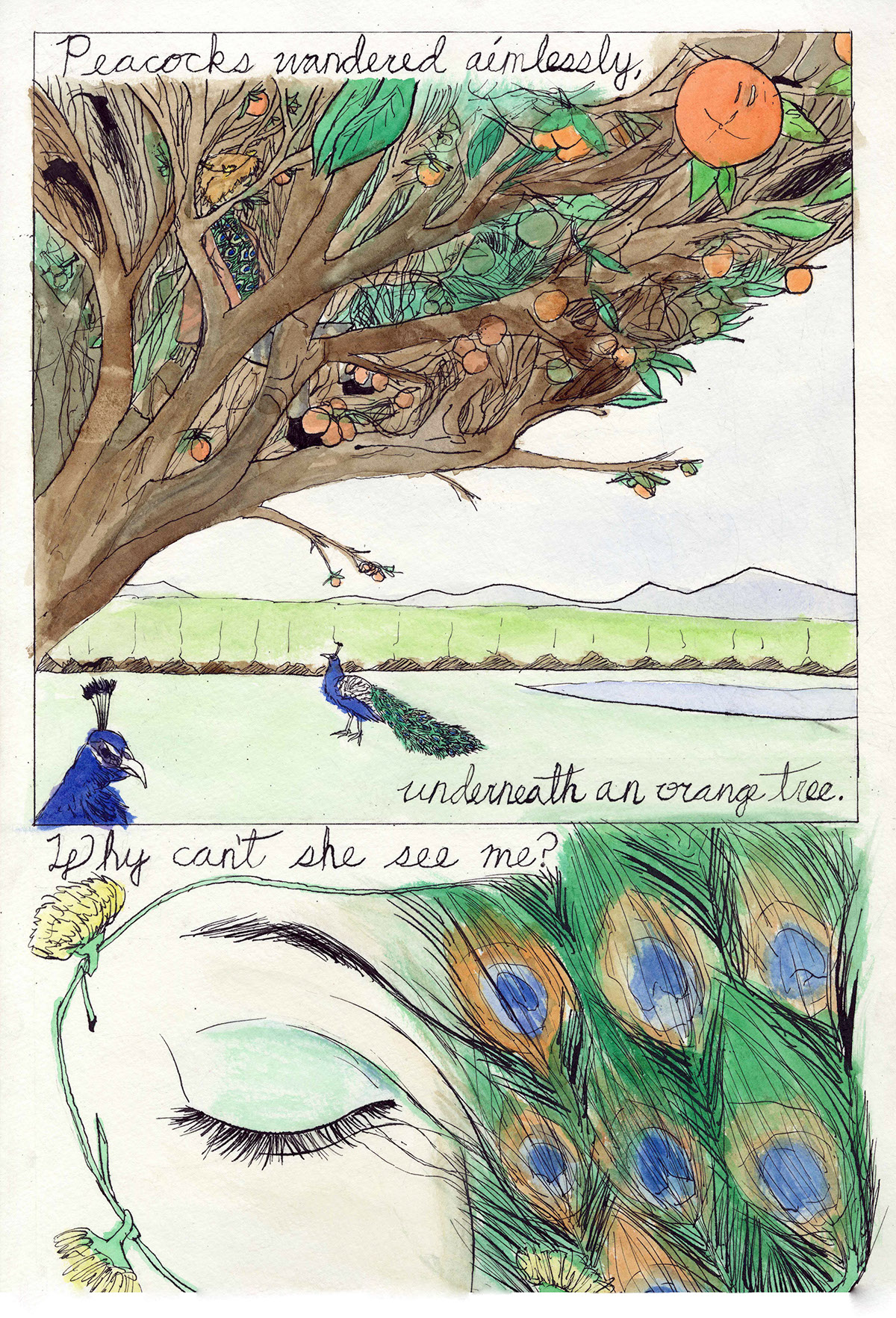
Page 3. The love of nature continues with these two panels. If you look closely, within the branches of the tree is hidden the first woman. She is wearing a peacock printed scarf to reflect the imagery of the song (duh). The colors used in each section have a lot to do with the personality traits they represent. This first section uses a lot of green, yellow and bright colors, whereas the next section uses red, purple and black.
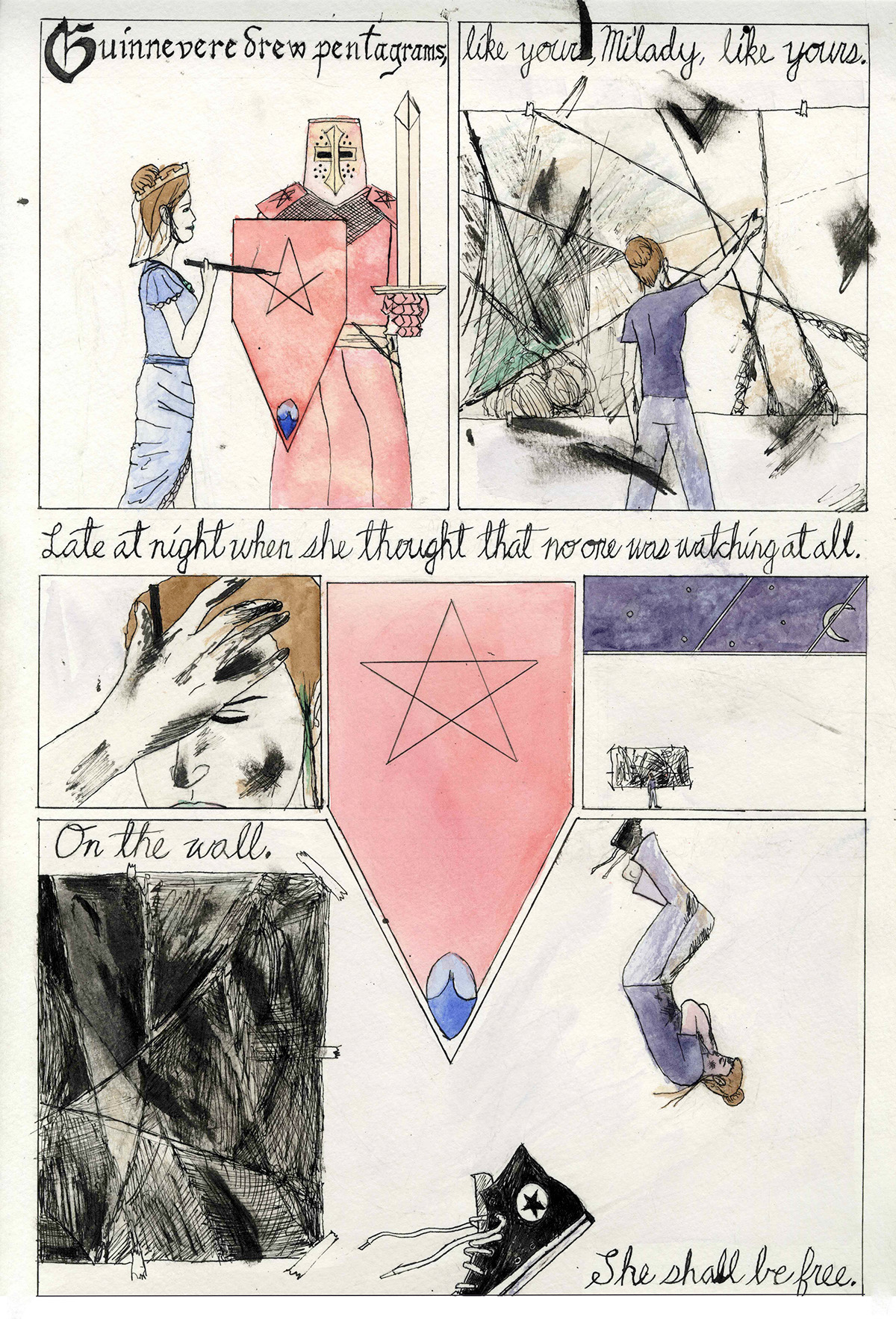
Page 4. I wanted to make my depiction of the comic personal, because Crosby wrote the song very openly, so here I recreate a fundamental atmosphere of my college: giant charcoal drawings and endless nights working. While working on art is not always a beautiful process, there is a real beauty to putting your soul into an artwork and capturing the intangible.
The pentagram has a lot of meaning, but it is discussed extensively and specifically as an important symbol for Sir Gawain in Sir Gawain and the Green Knight (a famous piece of King Arthur myth). The poem talks about the pentangle (another name for a pentagram) that adorns Sir Gawain's red shield, so I incorporated it by having Guinevere paint the symbol onto the knight's shield (I also added the eye of a peacock feather to the bottom of the shield to connect the story elements more).
While many of the marks are meant to look like charcoal (especially in the top right panel), all of it is ink, just rubbed out. I'm not exactly sure what she is suppose to be drawing, because I left it ambiguous so the hidden pentagram wouldn't stand out too much (the bottom left finished drawing has it pretty clear, while the upper right drawing in progress has her finishing the shape).
As a nice coincidence, converse sneakers utilize a pentagram as their logo, and artists often wear them because they are very cheap (and art school is very expensive). The bottom panel's odd shape and space creates a sense of entering a dream state, but I wouldn't take this to mean the rest of the comic is a dream. Instead I understand the unusual mood of the song to embody an etheral state that I want to be reflected throughout the entire comic, not just what comes after this sequence.
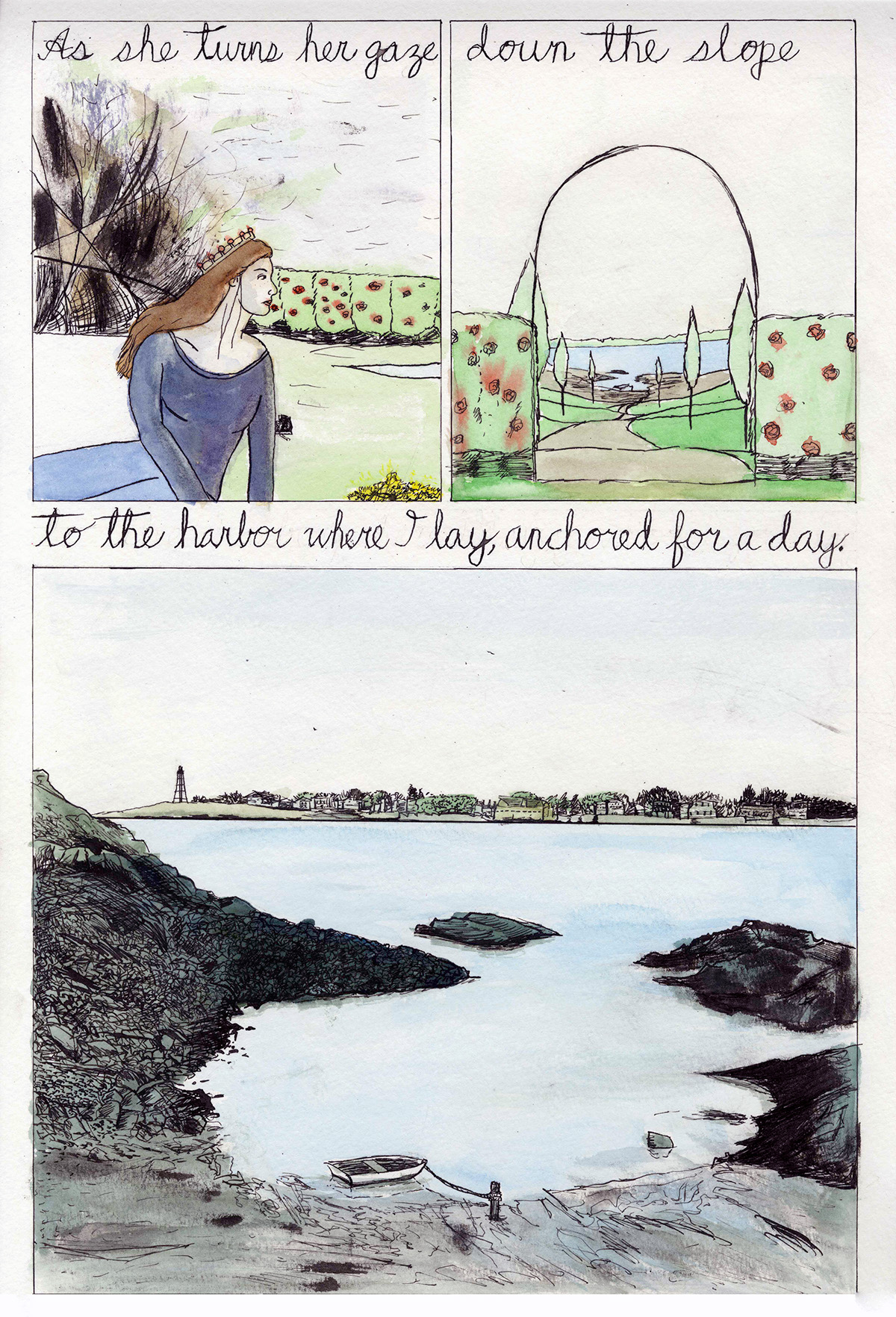
Page 5. As I mentioned, I am not sure if this should be seen as the dream of the artist, but the Guinevere here does resemble the artist from the last page who is ready to sleep after an exhausting amount of work...
Moving on. The upper left background combines elements from the earlier strip, with the charcoal drawing exploding with color and life, as if it is creating the world the Queen is occupying currently. I made it resemble the garden from page 2 and 3, but leading from the garden is a realistically rendered view of a harbor. The harbor is Marblehead Harbor, my hometown, with an empty boat added to the scene to play along with the lyrics.
As I tried to make this comic personal in ways I felt reflected what Crosby put into the lyrics, I decided to include views of what I've come to consider home. Here is the one I was born into, and later I illustrate one that I have come to adopt (by attending RISD).
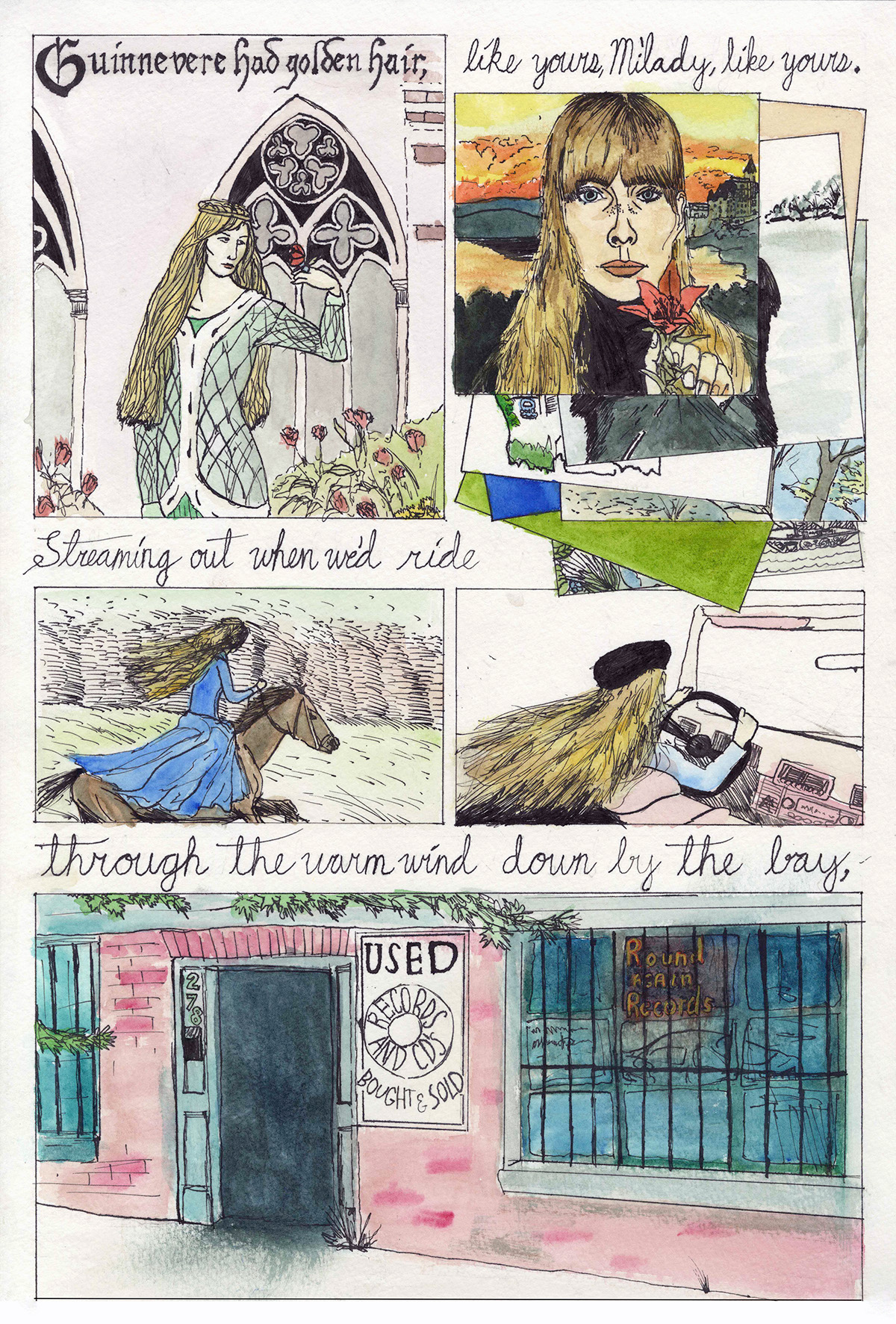
Page 6. This is where my comic overlaps especially with Crosby's lyrics. The description of golden hair connects with his former romantic relationship with Joni Mitchell. While I obviously have not even met Joni, I feel that my relationship to her music must be similar to what he would've felt when he wrote this. So while the first definition of beauty embraces the world around her, the second uses this world to inspire her, and this third definition uses it to create and reflect on something amazing. These three levels represent three distinct personalities; joyful, audacious, and Joni, who has the ability in her music (and her paintings) to reflect and analyze the good and bad the world is made of (especially relationships between people). These levels of creativity are fundamental to my perception of beauty in the world and in people.
The top right panel stacks 8 of her best albums (I own 11 on vinyl) in a way I think each could be identified if someone took the time...
Her depiction driving in the middle right is meant to reflect the mood of Hejira, my favorite album of hers (which Song for Sharon is on) and one that I especially looked to as I struggled my past two years at college to succeed. Identifying with her troubles solidified my drive to overcome my own, and many of her albums I purchased at a local record store in Providence (illustrated on the bottom). The colors of this last section aren't as clearly defined as the first two, but whites, blacks, and grays reflect Joni's (and any talented person's) ability to understand the world as it is.
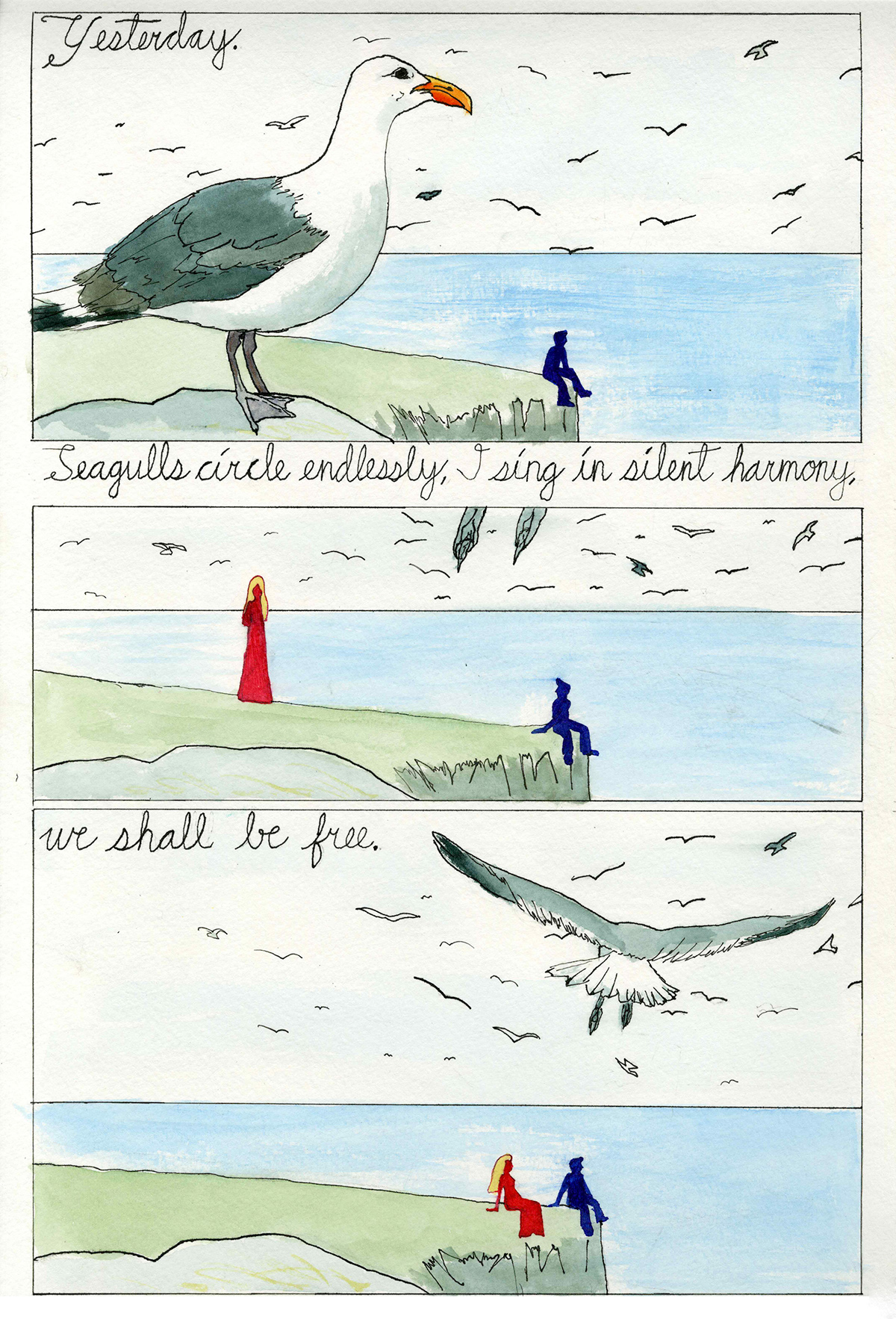
Page 7. This page alludes to the music of Joni (her first album was titled Song to a Seagull) as I feel the lyrics continue to do (David Crosby produced her first album). The cluster of seagulls contrast the open and ambiguous space (which I wanted to present as a sense of freedom, an integral theme to Joni's music), while the brightly colored siluoettes end the comic on an optimistic note.
These elements of my definition of beauty are subjective to my perception of the world, just as the lyrics of the song are subjective to the romantic memories of Crosby. Her hair is made to be golden to reflect the lyrics of the song, but the point is that beauty can be found in almost anyone, and it is important to recognize that.
As Billy Preston once said "if you can't be with the one you love, love the one you're with."

Page 8. The last page I made for the comic. It is the counterbalance to page 1, showing elements from roughly the second half of the comic. While the Guinevere on page 1 has her eyes closed, brown hair, and is in a garden in the daytime, this Guinevere has her eyes open, blonde hair, and the scene is during the night (although if she were occupying it literally, that would be a very small lighthouse).
